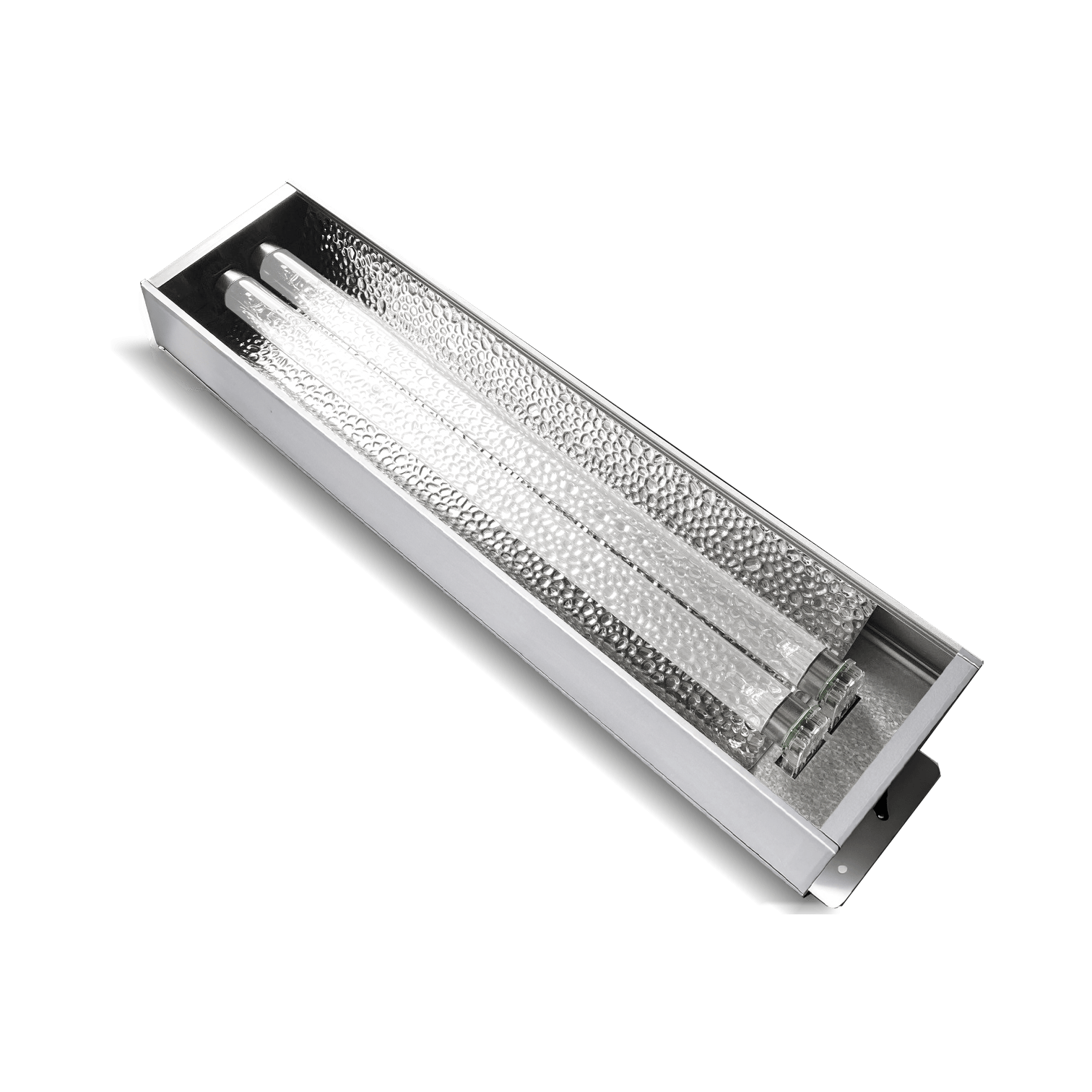UV Lamps
High-performance UV for both research & sterilization protocols
High-performance UV for research & sterilization protocols
Our irradiation lamps, available in filtered and unfiltered versions from 6 to 3×40 watts, are ideal for accurate fluorescence detection as well as general UV applications. Our Black Light unfiltered models deliver a broad spectrum covering 365 nm UV and visible light. For sterilization, germicidal lamps at 254 nm provide an effective barrier against contamination by damaging the DNA of microorganisms. Each lamp is built with an anodized aluminum housing for long-term use, and our Ondulex reflector technology maximizes UV output where you need it. The radiation is highly concentrated for consistent results. Whether mounted on a stand, placed in a holder, or fixed to the ceiling, these lamps adapt easily to your laboratory environment and constraints. For germicidal use, we recommend ceiling installation with safety interlocks to ensure the lamps are active only when the room is empty.




